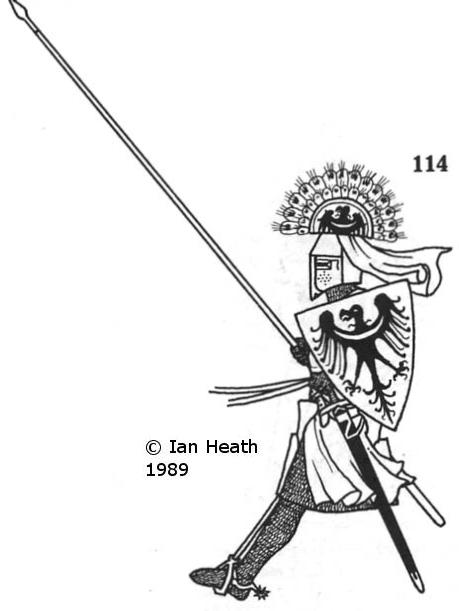
POLISH KNIGHT, c.1241
An extract from Armies of Feudal Europe 1066-1300by Ian Heath

114. POLISH KNIGHT, c.1241
This is Prince Henry II the Pious of Silesia, killed at Liegnitz in 1241, from a 14th century ms. illustration of the battle. He is basically indistinguishable from his Western European counterparts, the use of more traditional Polish equipment declining steadily over the preceding half-century under German influence. Some continued to wear nasal helmets like that of 113 but heaumes of the type depicted here were more commonplace amongst the gentry by the 1240s. The crest is of a characteristically Slavic type (compare that of figure 103), comprising a painted, metal-rimmed wooden centrepiece surmounted by eagle feathers. This ms. and some other 13th-14th century Polish sources would tend to indicate that such crests were worn in battle, but interestingly though the early-14th century tomb effigy of Duke Henry IV also depicts such a crested helmet a panel on the side of the tomb portraying a battle-scene shows him in an ordinary, uncrested heaume. It seems likely, incidentally, that the much later Polish winged hussar helmets evolved from crests such as this and that of figure 103.
In the original Duke Henry is shown riding a caparisoned horse, its housing possibly concealing a mail bard such as are known to have been in use amongst Polish princes and some of the wealthier nobility by about the mid-13th century. Polish horses were chiefly duns, bays and chestnuts.